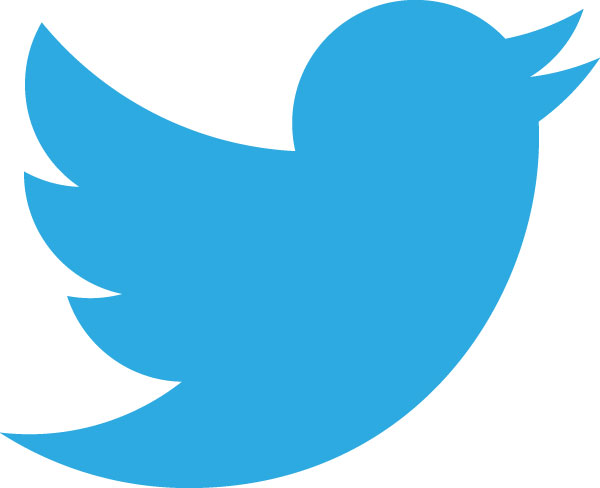Category: Investment research on Twitter
Spotlight on Social Media
Spotlight on Social Media: Twitter’s Registration Policies Under Review
 Recognizing the rising influence of social media networks on the spread of junk news and unfiltered opinion, Facebook and Twitter have been called recently to testify before Congress to discuss their policies to monitor illegally registered and anonymous users, as well as advertisers. A wide range of concerns are under examination, including the use of social networks by foreign governments to influence the outcome of the 2016 presidential election, as well as foreign governments and hate groups seeking to inject invective into the discourse on current affairs.
Recognizing the rising influence of social media networks on the spread of junk news and unfiltered opinion, Facebook and Twitter have been called recently to testify before Congress to discuss their policies to monitor illegally registered and anonymous users, as well as advertisers. A wide range of concerns are under examination, including the use of social networks by foreign governments to influence the outcome of the 2016 presidential election, as well as foreign governments and hate groups seeking to inject invective into the discourse on current affairs.
Unlike Facebook, which purports to have policies in place to vet the identity of those who purchase ads and post opinions, Twitter has a looser policy as it pertains to posting opinions, one in which a user need not provide details of his or her identity to post messages.
Twitter announced on September 28th that Russia Today, a media organization with strong ties to the Russian government, purchased $274,000 in US ads in 2016 and promoted over 1,800 tweets targeted to the US market. The company also detailed some of its efforts to root out misinformation on its sites, as well as ongoing efforts to eliminate false or spam accounts, which the company estimates as less than five percent of its monthly active user base, which totals 328 million.
In light of prior concerns expressed by US and European regulators, Twitter already has policies in place to root out terrorist postings, hate-related violence, and child pornography from its web sites. Partly in response to calls for Twitter to police its user community, the company recently announced that it has suspended nearly 300,000 user accounts with links to terrorism in the first half of 2017, 95 percent of which were unmasked by the company’s automated spam-fighting tools. 75 percent of the accounts were suspended before the account could fire off its first tweet.
With regard to hate speech, Twitter and Facebook last year pledged to European authorities that they would respond to violent, xenophobic, or racist comments within 24 hours. European authorities have recently requested that the companies respond even faster in cases of suspected terrorist postings.
Twitter has, however, chosen not to be an arbiter over political views or the veracity of news sites espoused by users, in keeping with its policy to allow the free exchange of ideas and opinions, no matter how crudely expressed. This policy has placed it at odds with various national governments over the years, including the US government. Twitter has sued the US government over Twitter’s desire to publish in its transparency reports the precise number of requests sought by government authorities and FISA court orders.
Our overall sense is that government authorities will keep the heat on Twitter to suspend and remove terrorist postings on the platform, but that authorities will be less able to restrict political opinions and regulate foreign news sources, both of which would be anathema to free speech advocates.
Twitter: Obstacles to Overcome
 As of this writing in late December, Twitter (NYSE: TWTR) continues to struggle, relative to its internet advertising peers Facebook (NASDAQ: FB) and Google (NASDAQ: GOOGL). Despite a flurry of activity in the fall, during which the company was rumored to be on the auction block, the stock has floated back down to earth, and then some, as investors consider several ongoing challenges faced by the company. Among these are persistent management turnover, a struggle to rekindle user growth, and what we perceive to be mediocre earnings quality.
As of this writing in late December, Twitter (NYSE: TWTR) continues to struggle, relative to its internet advertising peers Facebook (NASDAQ: FB) and Google (NASDAQ: GOOGL). Despite a flurry of activity in the fall, during which the company was rumored to be on the auction block, the stock has floated back down to earth, and then some, as investors consider several ongoing challenges faced by the company. Among these are persistent management turnover, a struggle to rekindle user growth, and what we perceive to be mediocre earnings quality.
Management Turnover Continues
In the first 18 months following its IPO in November of 2013, Twitter was plagued by rampant management turnover, including a 60-day interval, during which three of the top five executives listed in its S-1 filing resigned or were reassigned to new posts in the company. Jack Dorsey, Twitter’s Chairman and co-founder, became CEO in October of 2015, and, until recently, management turnover had stabilized.
On November 7th Twitter COO Adam Bain informed the company of his decision to resign, after a six year stint, which featured a role as head of advertising sales. Two days later, Twitter announced that it had appointed CFO Anthony Noto as COO. Noto will continue in a dual role as COO and CFO until a new CFO is hired. The COO position is crucial, as Twitter’s CEO Jack Dorsey continues to split his time between Twitter and Square, another company that he co-founded. Noto, who had been in charge of live content, in addition to his CFO responsibilities, is now in charge of global advertising sales, data, MoPub, as well as global partnerships and business development.
Then on December 20th, Twitter’s chief technology officer, Adam Messinger, resigned. On the same day, Twitter’s VP of product, Josh McFarland let it be known that he was leaving the company to join a venture capital firm.
Working to Rekindle User Growth
Twitter reported its lowest-ever rate of year over year revenue growth in Q3 2016, as advertising sales rose just six percent over the prior year. This was the seventh consecutive quarter that sales growth declined. Monthly active users (MAUs) grew by just three percent in the last quarter. In addition, the company has, for several years, declined to report the number of daily active users, which are suspected to be considerably lower than its 317 million MAUs.
Twitter is working behind the scenes to induce users to utilize the service more frequently. Efforts underway include the addition of new content, such as Thursday Night Football, as well as the application of machine learning and artificial intelligence to improve the user experience, particularly in the area of notifications, and home timeline, where the majority of user time is spent. The company is focusing in particular on improving the relevance of user notifications, and emphasizing topics and interests, rather than following people per se, as methods to improve user engagement.
Earnings Quality Remains Poor
Like most VC-backed West Coast technology companies, Twitter utilizes a healthy dose of stock-based compensation, which reduces the near term cost of compensating employees, but passes the longer term cost along to shareholders, who are left to absorb the increased issuance of stock in the form of reduced earnings per share, once the options grants are exercised. In the third quarter of 2016, stock-based compensation accounted for 32 percent of gross operating expenses. SBC is particularly noteworthy within research and development, where it accounted for 49 percent of gross research and development expenses in the third quarter.
Another area of concern regarding Twitter’s EBITDA presentation is how it accounts for research and development costs. Twitter continues to capitalize, rather than expense, a considerable portion of its research and development costs. While this is a perfectly legal practice, we believe R&D costs should be expensed in the period in which they are incurred, rather than capitalized as assets that can be amortized later through COGS, at which point the non-cash amortized expense is viewed by many to be inconsequential.
Twitter continues to languish relative to its internet advertising peers. Our sense is that the company still has obstacles to overcome, as its management ranks continue to shift, user growth remains tepid, and the company’s earnings quality remains low.


